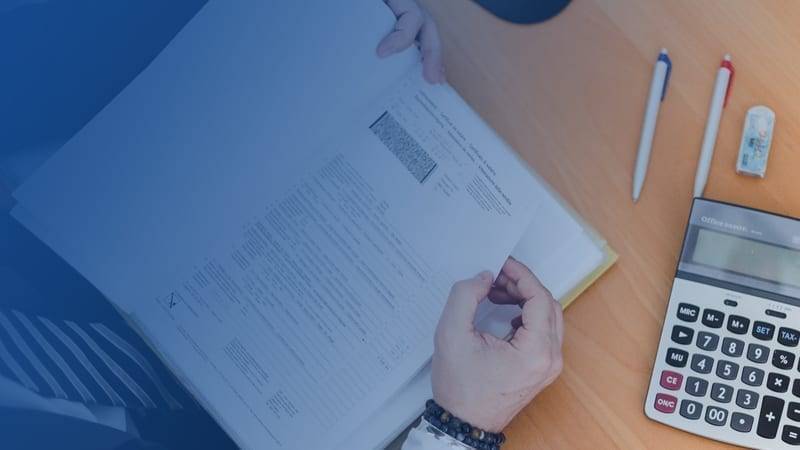This article was written in collaboration with LeaseQuery’s partner in easing the burden of lease accounting, Postlethwaite & Netterville (P&N).
While the lease accounting delay for private companies and nonprofits may have been welcomed with open arms, it isn’t quite the gift that keeps on giving. Instead, it’s a gift that could easily be squandered with inaction. Governmental entities, on the other hand, have no such gift at all when it comes to their GASB 62 to GASB 87 transition deadline.
It’s no surprise that organizations have recently had their plates full contending with a laundry list of major accounting changes. From pension and other post-employment benefits (OPEB) accounting, to revised fiduciary fund reporting, overhauled rules force financial executives and managers to prioritize complying with the new GASB standards.
Transitioning from GASB 62 to GASB 87
The effective date for GASB 87, the new lease accounting standard, was for fiscal years beginning after December 15, 2019. Delayed reactions can result in inadequate implementation, which can potentially lead to modified opinions or findings of internal control deficiencies. What may come as a surprise is how complex the compliance journey for governmental entities can be. The intricacies of compliance are one reason why the FASB recommended delaying the deadline for private companies and nonprofits by an additional year. GASB 87 itself represents the first change to lease accounting for governmental entities in decades.
The three overarching keys to a successful transition in 2020 will be the people involved, the tools to assist with the implementation, and building sustainable processes to help maintain compliance on a go-forward basis. Fortunately, most GASB 87 adopters have the advantage of leveraging the experience of early and public adopters to inform their own transition process as they move away from GASB 62.
Eight lessons to leverage from public companies’ adoption of the new lease accounting standards:
1) Get started with your transition early
Public companies have reported issues from difficulty inventorying leases to selecting software that wasn’t fully compliant with the new lease accounting standards. Many wish they would have had more time to implement the new standards.
2) Identify the right lease accounting software
For companies with multiple leases, GASB lease accounting software is a critical component of your transition. Companies with a lease accounting solution in place are better able to identify auditing efficiencies, take advantage of tools that will enable them to make more informed financial decisions, and work more efficiently overall.
3) Understand the difference between the old and new standards
For governments, the old compliance standard was primarily GASB 62, which incorporated pre-1990 FASB Statements into the GASB standards. Moving forward to GASB 87, organizations need to be able to identify key differences in how they should be accounting for leases.
Here’s a quick recap of significant differences from GASB 62 to GASB 87:
Lease classification
Previously, GASB 62 classified all leases for lessees between capital and operating leases. Under GASB 87, all leases will be classified as finance leases.
Short-term leases
The GASB 62 standard did not have a separate rule to address the accounting for short-term leases and operating lease. However, GASB 87 requires separate accounting for each. Also, any lease that has a maximum possible term of twelve months (inclusive of renewal options) or less is not subject to GASB 87.
Title transfer at lease end
In addition to the change in treatment for short term leases, the accounting treatment for a contract that transfers the title over to the lessee has also changed. Under statement 62, a lease that transferred title would result in a capital lease designation. However, under statement 87, leases with title transfers do not qualify as lease agreements and should be accounted for as a financed purchase.
Lessor accounting
Under GASB 62, operating leases were only established as a recognition of income when payments became due. With GASB 87, lessors will now mirror the lessee side of accounting, establishing a lease receivable on the balance sheet, as well as a deferred inflow of resources, and recognize the income over the term of the lease.
Disclosure Requirements
Footnote disclosure requirements will be different, as they now include information regarding lease assets and amortization, lease outflows and inflows, and principle and interest payments through the term of the lease.
4) Identify potential departments within the company to work on the transition project
To make the transition process simpler for you, the cross-functional team, and your organization overall, have one person dedicated to attending meetings, providing contracts for you to review, etc.
5) Take inventory of your lease agreements
Gather all the information you need to comply with the new lease standard. Collecting the right lease data requires a methodical, thorough approach that includes looking at your requisition process, engaging in the right departments, documenting your contracts in a lease tracking template, and cross-checking for accuracy.
6) Read your lease agreements for critical terms
Before transitioning to the new standards, it’s important to go back and read through your lease agreements to ensure all critical lease terms have been met and accounted for. Small missteps within the terms of the lease agreement could cause major hiccups when transitioning to GASB 87.
7) Understand the incremental borrowing rate (IBR)
The standard requires that lease liabilities be recorded at present value of expected lease payments using the interest rate charged by the lessor, or if that rate is not readily determinable, a lessee can use its incremental borrowing rate. The FASB recently identified the incremental borrowing rate as one of the most confusing concepts of ASC 842. GASB 87 adopters should begin to understand how IBR should be calculated and when an estimated IBR is to be used.
8) Compile your GASB 87 liability records
Using your selected lease accounting solution, enter the data, review the entry and its output, and apply appropriately to the financial statement preparation process.
There are a few other key steps accountants within the governmental sector should take to ensure a smooth transition. These steps include reconciling all data to create a lease inventory, validating completeness, performing a reasonable test for rent expenses, and recording all transition adjustments.
The time to act is now
Compliance deadlines are more than just a motivator for action. Throughout the process of reaching compliance, many organizations uncover enhanced business intelligence by increasing data transparency across the business and providing access to insights the organization didn’t have before. Complying with the GASB 87 standard arms government organizations with more – and clearer – data to make improved strategic decisions about leasing operations across the board.
Any days or months you delay your compliance journey are days and months you’re missing out on potential business insights, meaning government organizations should begin building their lease accounting team, tools, and processes now. The right team will likely include an executive sponsor, and representatives from finance, accounting, and operational leaders. Companies with multiple leases are selecting lease accounting software to aid in their transition, a process that can involve extensive research to ensure the solution is fully compliant, adaptable with existing systems and avoids some of the common technical issues uncovered during the public company transition process.
About P&N
For more than 70 years, P&N has helped businesses and individuals across the country streamline and organize operations, comply with changing regulations, and boost business growth with the right technological tools. Their personal, professional, and practical way of doing business has led P&N to become one of the largest CPA and consulting firms in the Gulf Coast region and the only Top 100 US accounting firm based in Louisiana.













